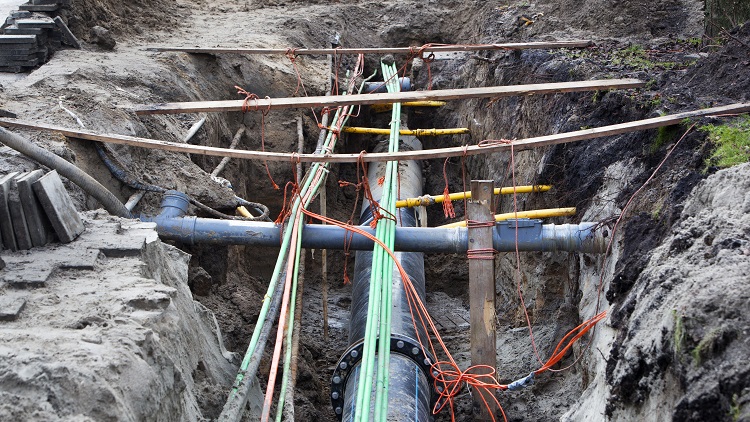Understanding Below Ground Construction Dangers

Utilities have been placed underground in America for more than 200 years. These underground utilities can include sewer and water laterals, telephone, fuel, and fiber optics. Unfortunately, even with many updates and new development to our infrastructure through the years, there can be poor documentation—or sometimes none at all—of abandoned utilities left underground.
The dangers of hitting underground utilities when excavating or digging can never be overstated. The stories are not new to us, as we have seen them on the news. A contractor hits a natural gas line and an explosion takes place. A landscaper cuts a fiber-optic line while planting trees and takes out communication to an office building down the street. A homeowner hits a power line when installing a post for a backyard fence. With devastating consequences, including injury, death, and financial liability, it is always a good idea to understand or review procedures regarding any subsurface work.
To avoid problems, it is standard practice to call a free locating service in your area (e.g., Diggers Hotline here in Wisconsin) prior to digging. These services, which locate publicly owned underground utilities, typically need 24 hours of notice before excavation or digging begins. A call by the contractor to relocate utilities on the same property may be necessary if the locating flags are lost or after seven days of the first locate.
Common projects that need underground locating include planting trees, building decks, installing mail boxes or fences, digging ponds, and pouring concrete.
It is critical to know the color codes of the flags to identify the utility located. Check out this helpful chart to learn more about what each color means.
Diggers Hotline and other free locating services do not locate private underground utilities. Contractors need to do additional research on the property for any unknown obstructions.
Utilities that are shallower in the ground, like communication and electrical lines, tend to be more vulnerable. Water laterals in the cold regions of the country run below the frost line. Here in Wisconsin, I prefer running water service at six feet below the ground, especially if it is under a parking lot. I’ve seen frost as deep as five feet in these types of locations. Sanitary sewer laterals can vary in elevation.
Uncovering a utility line that was installed using directional boring can be difficult, even when the utility has been located. Typically, a contractor will dig down alongside the flag, out about three to four feet. The excavator will then dig into the side toward the utility, exposing it from the side. The excavator learns to read the soil, and when they get into the over dig, they know they are close to the utility line. Cautiously, the excavator knows to slowly hand dig until the utility is exposed. However, when a utility is installed using directional boring, there is no over dig to give warning that the utility line is near.
Hydro excavation, or what some call vacuum excavation, is a technique that uses highly pressurized water along with an air vacuum to dig and remove soil. It can reduce costs and risks that are brought about by conventional digging methods. Hydro excavation can be an effective and non-destructive way to uncover utility lines, including ones installed by directional boring.
An insurance company that cares about you and insuring the things you wish to be insured.
Get a Quote> Find an Agent>

